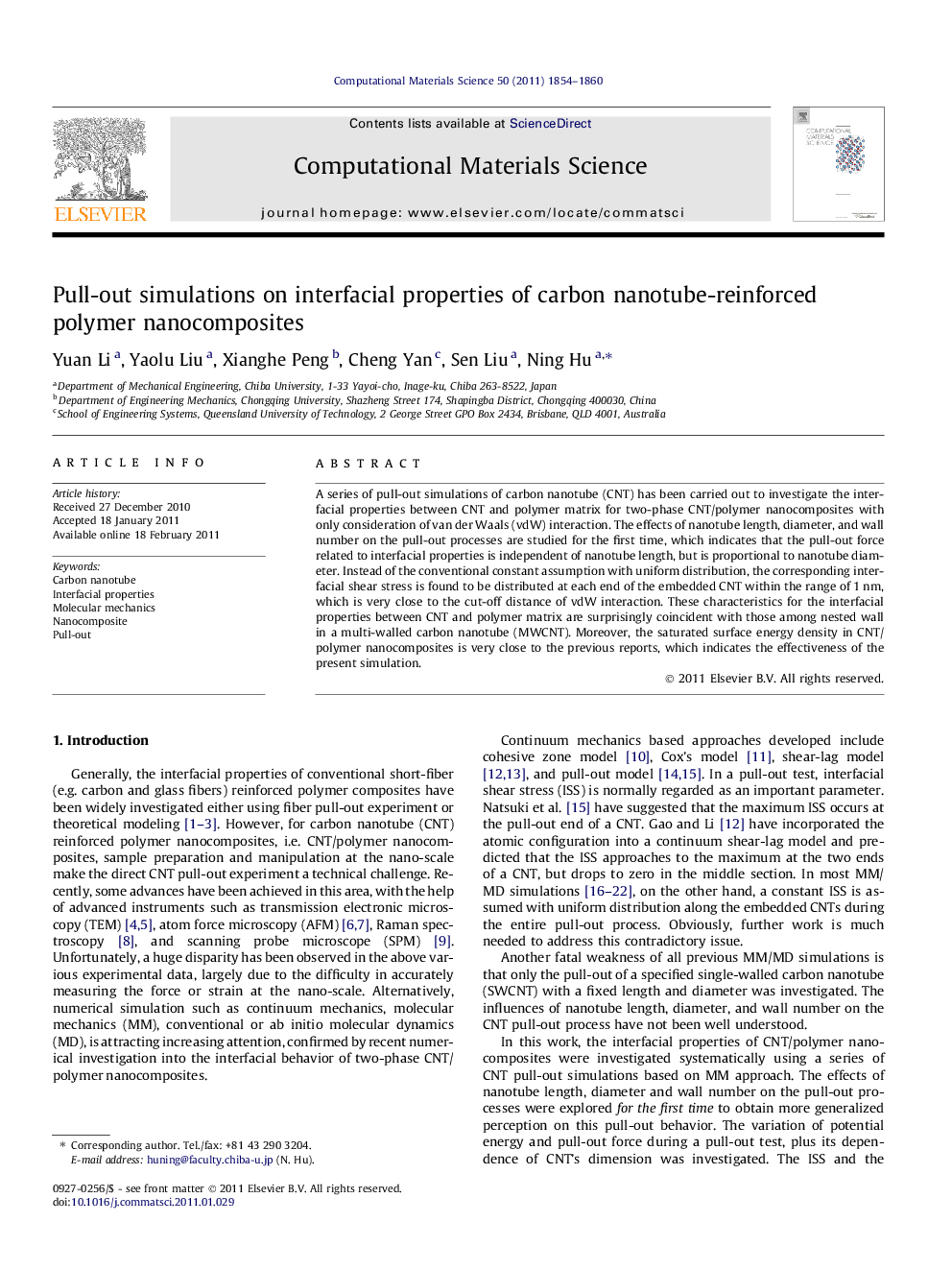| Article ID | Journal | Published Year | Pages | File Type |
|---|---|---|---|---|
| 1562661 | Computational Materials Science | 2011 | 7 Pages |
A series of pull-out simulations of carbon nanotube (CNT) has been carried out to investigate the interfacial properties between CNT and polymer matrix for two-phase CNT/polymer nanocomposites with only consideration of van der Waals (vdW) interaction. The effects of nanotube length, diameter, and wall number on the pull-out processes are studied for the first time, which indicates that the pull-out force related to interfacial properties is independent of nanotube length, but is proportional to nanotube diameter. Instead of the conventional constant assumption with uniform distribution, the corresponding interfacial shear stress is found to be distributed at each end of the embedded CNT within the range of 1 nm, which is very close to the cut-off distance of vdW interaction. These characteristics for the interfacial properties between CNT and polymer matrix are surprisingly coincident with those among nested wall in a multi-walled carbon nanotube (MWCNT). Moreover, the saturated surface energy density in CNT/polymer nanocomposites is very close to the previous reports, which indicates the effectiveness of the present simulation.
Research highlights► To investigate the interfacial properties of CNT-reinforced nanocomposites, a series of pull-out simulations of CNT from polyethylene matrix are carried out based on molecular mechanics. ► The corresponding potential energy increment is found for the first time to be independent of nanotube length, but proportional to nanotube diameter, which is surprisingly similar with that in the sliding behavior among nested walls in a MWCNT. ► On this basis, a set of formula is proposed to predict the pull-out force, interfacial shear stress and surface energy density.
